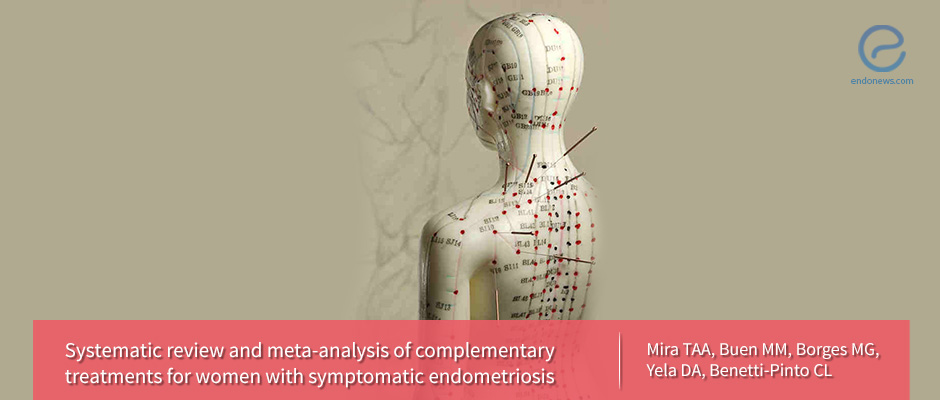Complementary treatments for endometriosis symptoms: acupuncture, exercise, electrotherapy, or yoga?
Aug 23, 2018
Acupuncture to help reduce endometriosis pain
Key Points
Highlight:
- This review article discussed the use of complementary treatments for women with distress associated with endometriosis symptom.
Importance:
- Chronic inflammation during endometriosis can cause persistent symptoms. The remedies to alleviate these symptoms remain unclear.
What's done here:
- The main objective of this review was to identify randomized controlled trials relating to complementary pelvic pain treatment and assess their efficacy in alleviating the pain of endometriosis.
- A number of databases were used to search for studies examining “physical therapy” or “complementary treatment” and “endometriosis”.
- Finally, eight studies were identified. The complementary interventions evaluated were acupuncture, exercise, electrotherapy, and yoga.
Data:
- All studies demonstrated a positive trend in treating symptoms.
- Acupuncture showed a significant benefit in pain reduction as compared with placebo in the meta-analysis.
Limitation:
The review only presented a small number of studies that were available, especially merely two studies were included for the meta-analysis. Future controlled studies will be needed to support any benefit of complementary interventions.
Lay Summary
Endometriosis is associated with debilitating symptoms in some women including dysmenorrhea, chronic pelvic pain, deep dyspareunia, dyschezia, and dysuria. There are a few therapeutic options to treat these symptoms; however, only a few studies have considered treating the pain symptoms using conventional complementary treatments.
This article by Mira et al. from Department of Obstetrics and Gynecology, the University of Campinas in Brazil, was published in International Journal of Gynecology & Obstetrics with the main aim to identify randomized clinical trials of complementary treatments to alleviate endometriosis pain symptoms.
The review strategy was to identify randomized clinical trials examining “physical therapy” or “complementary treatment” and “endometriosis” using search databases: Lilacs, Scielo, PEDro, Scopus, Pubmed, CENTRAL Cochrane, Science Direct, and Google Scholar. The clinical trials study included was mainly those that studied the use of a complementary treatment to improve pain symptoms of standard endometriosis. From these searches, eight studies were identified, of which only two studies were included in the meta-analysis.
These eight studies include complementary modalities such as acupuncture, exercises, electrotherapy, and yoga. The authors of these interventions found the positive contribution of the studied interventions on improving endometriosis symptoms in women receiving hormonal treatment.
From these studies, numerous complementary interventions may be incorporated into the standard treatments for endometriosis to improve pain symptoms. Nonetheless, the authors of this paper suggested that only the use of acupuncture was found to provide significant improvement. Hence, certain complementary interventions when given together with the standard clinical treatment of endometriosis may be useful for patients. However, it must be noted that there are only limited randomized clinical trials that thoroughly study the efficacy of complementary interventions.
To ascertain real benefit, many more controlled clinical studies will be needed to promote complementary treatment options that will improve endometriosis pain.
Research Source: https://www.ncbi.nlm.nih.gov/pubmed/29944729
pain endometriosis symptom treatment intervention complementary treatment acupuncture excercise electrotherapy yoga

